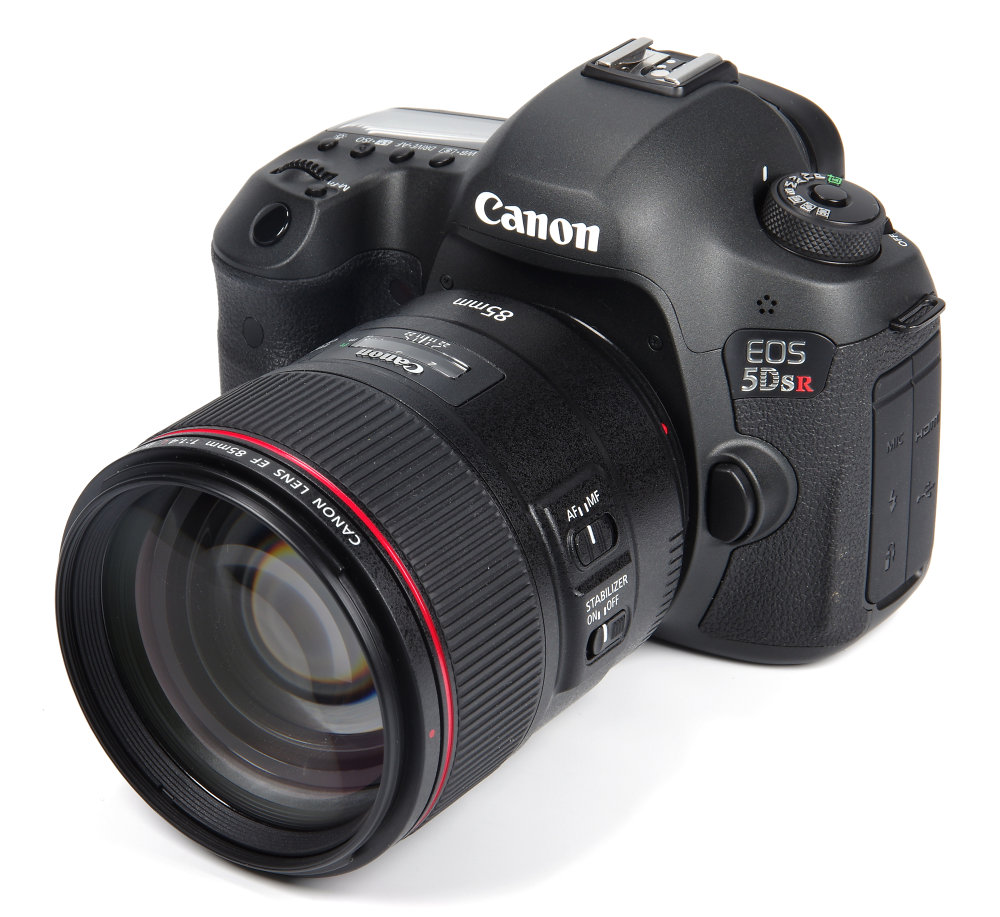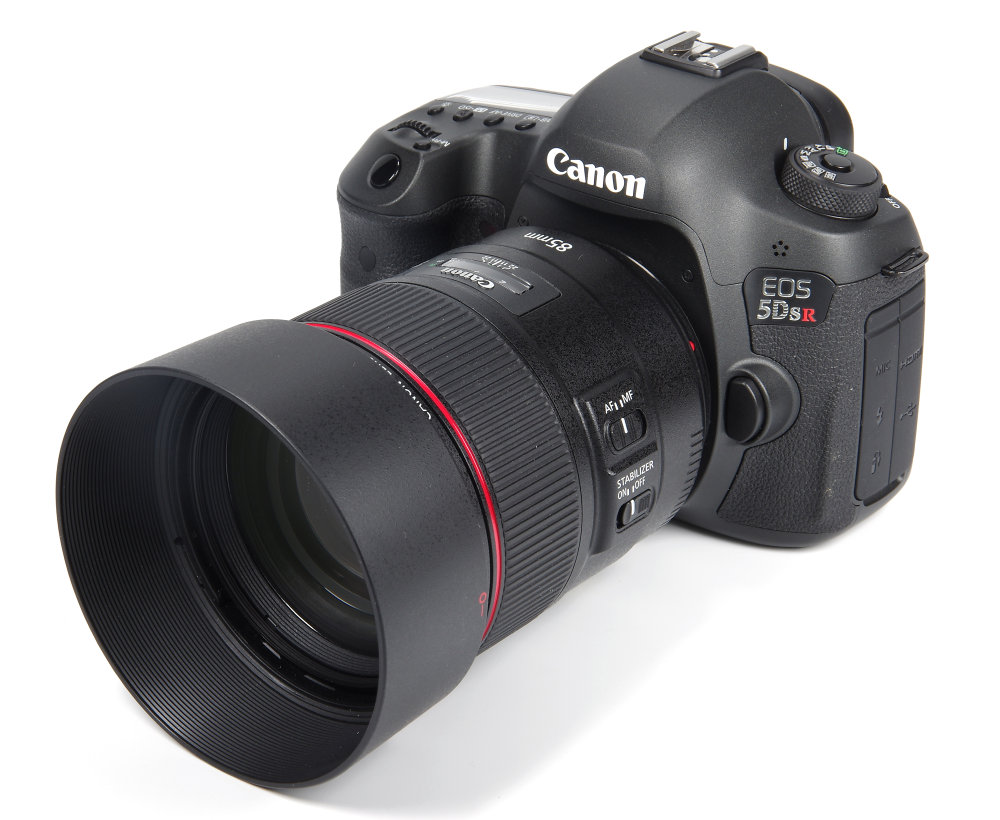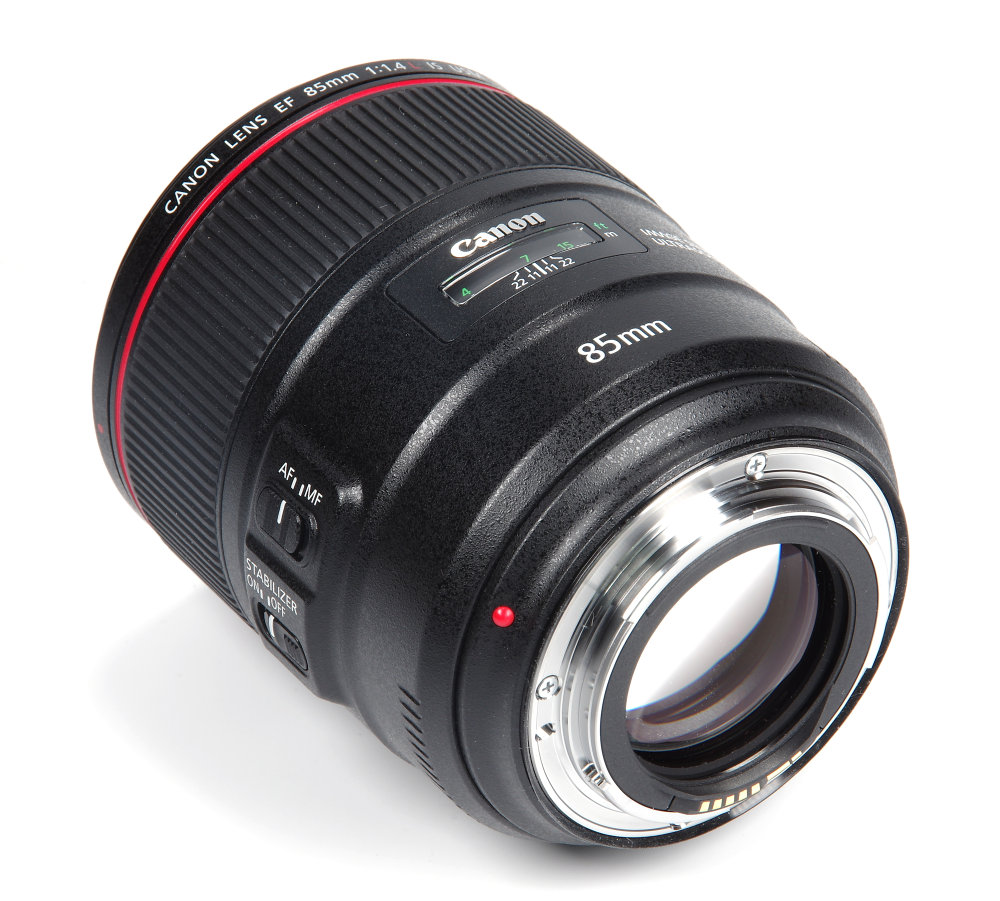Canon EF 85mm f/1.4L IS USM Review
Canon EF 85mm f/1.4L IS USM Handling and Features
The 950g of solid lens looks immediately impressive. It is very well made and the finish is just beautiful. A lens can indeed be a thing of beauty. The provided bayonet lens hood clips firmly and precisely into place. A locking catch is provided that ensures the hood will stay put. Within the bayonet there is a 77mm filter thread. The front glass, ASC (Aero Sphere Coating) coated, fills the available space, leaving no room for the lens description, which is instead found on the outer edge of the lens barrel. There is a wide rubberised manual focus ring, smooth as silk in operation. The manual focusing remains active during AF, so the final focus point can be tweaked when necessary. This can be useful when shooting through fine branches, for example.
Focusing is down to 85cm, a maximum magnification of 0.12x. This is fine for close portraiture but not exceptionally close. If closer focusing is required, extension tube EF 12 II gives magnifications of 0.26x – 0.15x. Extension tube EF 25 II offers magnifications between 0.43x - 0.33x. The lens is not compatible with extenders (teleconverters).
The distance scale is calibrated in feet and metres and a depth of field scale is provided. However, this is so small that in reality it is only of very limited use. Further round the barrel at the same point is the AF/MF switch. Next to this is the Stabilizer on/off.
There are no other lens controls, and no aperture ring as all settings are controlled by the camera body. The body of the lens is dust and weather resistant, a very valuable feature.
Optical construction is 14 elements in 10 groups. The aperture consists of a nine bladed diaphragm, with the aim of providing beautiful bokeh, the smoothness of the out of focus areas in an image.
Out in the field, there are few lenses as enjoyable to use as the fast, bright, short telephotos, typically from 85mm to 100mm. This new Canon is no exception, offering a tack sharp viewfinder image that snaps in and out of focus with speed and precision. Locked in on the eyes, portraits are ideal subjects for the lens, giving a working distance where perspective is flattering and which is close enough to maintain good communication with the model. Low light telephoto applications are also fair game, along with any landscape, architectural or street applications that call for a slightly longer lens.
Add your message
Please login here or if you've not registered, you can register here. Registering is safe, quick and free.
photodo Stats
428 MTF tests
74 in-depth photodo reviews
100+ users join each day
Help the lens community by reviewing or rating a lens today via our lens search
Latest Lens Reviews
- Chinon 28mm f/2.8 Vintage Lens Review
- Canon EF 70-200mm f/4L IS II USM Lens Review
- Samyang AF 85mm f/1.4 EF Review
- Sigma 70mm f/2.8 DG Macro Art Review
- Samyang AF 24mm f/2.8 FE Review
- Meike 50mm f/1.7 Review
- Tamron 70-210mm f/4 Di VC USD Review
- Lensbaby Burnside 35mm f/2.8 Review
- Asahi Super Takumar 50mm f/1.4 Review
- Asahi Super-Multi-Coated Takumar 135mm f/3.5 Review



